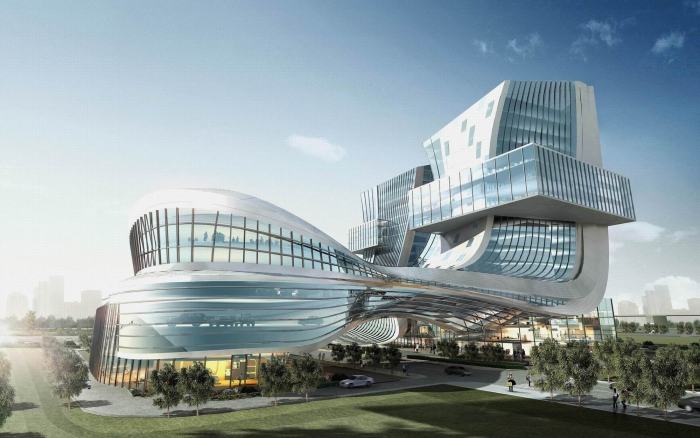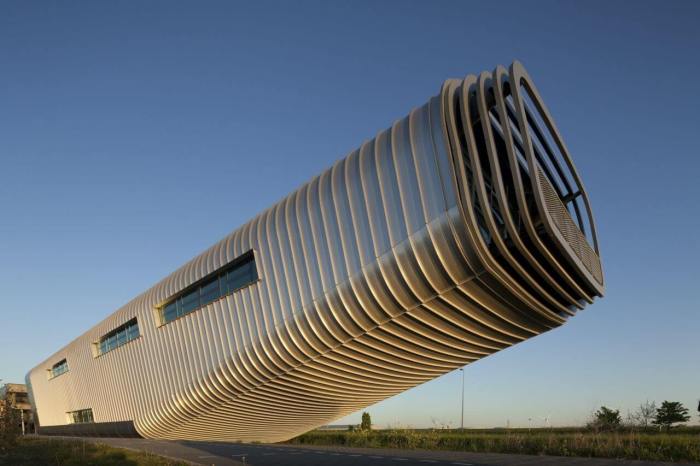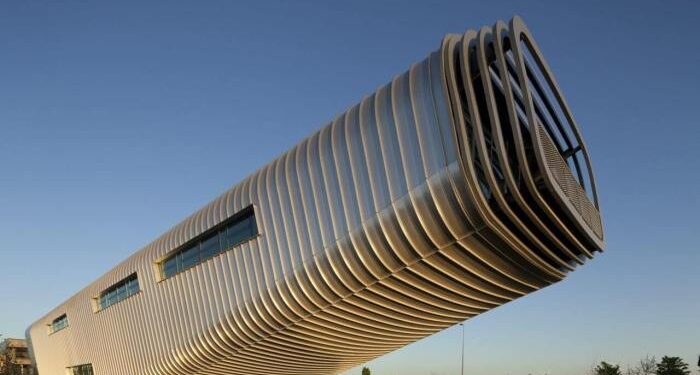Step into the realm of industrial architecture where creativity meets functionality. From iconic designs to sustainable practices, industrial architects play a crucial role in shaping the modern world. Let’s delve into their world of innovation and ingenuity.
Industrial architecture is a fascinating field that blends creativity with technical expertise. In this article, we’ll explore the role of industrial architects, their design process, and the importance of sustainability in their work.
Overview of Industrial Architecture

Industrial architecture is a specialized field that focuses on designing and planning structures for industrial purposes. Industrial architects play a crucial role in creating efficient and functional spaces that cater to the needs of various industries.The importance of industrial architecture in modern society cannot be overstated.
Well-designed industrial buildings not only enhance productivity and workflow but also contribute to the overall aesthetic appeal of the surrounding environment. They have the power to transform a simple factory or warehouse into a visually striking and technologically advanced facility.
Examples of Famous Industrial Architectural Designs
- The Guggenheim Museum Bilbao in Spain, designed by architect Frank Gehry, is a prime example of innovative industrial architecture. Its unique titanium-clad exterior has become an iconic symbol of modern design.
- The Sydney Opera House in Australia, designed by architect Jørn Utzon, is another famous industrial architectural masterpiece. Its sail-like roofs and intricate concrete shell structure showcase the beauty and complexity of industrial design.
- The Pompidou Centre in Paris, designed by architects Renzo Piano and Richard Rogers, is a groundbreaking example of industrial architecture. Its exposed mechanical systems and colorful exterior have earned it a place among the most iconic modern buildings in the world.
Skills and Qualifications
To become an industrial architect, individuals need to possess a combination of technical skills, creative abilities, and educational qualifications. Industrial architects are responsible for designing and planning industrial facilities, ensuring they are functional, safe, and efficient.
Skills Required
- Technical knowledge of industrial processes and systems
- Proficiency in architectural design principles
- Strong problem-solving and critical thinking skills
- Attention to detail and accuracy
- Effective communication and teamwork abilities
- Project management skills to oversee the construction process
- Knowledge of building codes and regulations
Educational Qualifications
Typically, individuals pursuing a career in industrial architecture need to obtain a professional degree in architecture from an accredited institution. Common educational paths include:
- Bachelor’s degree in Architecture
- Master’s degree in Architecture (Optional but beneficial for advanced positions)
- Internship or work experience in an architectural firm
- Licensure as a professional architect (requirements vary by state)
Software and Tools
Industrial architects utilize a variety of software and tools to design and visualize industrial projects. Some common tools include:
- Computer-aided design (CAD) software like AutoCAD
- Building Information Modeling (BIM) software such as Revit
- 3D modeling software like SketchUp
- Project management tools for scheduling and budgeting
- Visualization tools to create renderings and presentations
Industrial Architectural Design Process
Industrial architects follow a systematic design process to create new structures that are both functional and aesthetically pleasing. By incorporating innovative solutions, they are able to achieve a balance between the industrial requirements and visual appeal of the final design.
Incorporating Functionality and Aesthetics
Industrial architects begin the design process by conducting a thorough analysis of the client’s needs and the functional requirements of the project. They consider factors such as workflow, safety regulations, and production processes to ensure that the final design meets all industrial standards.
At the same time, they pay close attention to the aesthetic aspects of the structure, incorporating elements of modern design and sustainable materials to enhance the overall visual appeal.
- Integrating natural light: Industrial architects often incorporate large windows and skylights to maximize natural light within the workspace, reducing the need for artificial lighting and creating a more pleasant environment for workers.
- Flexible workspace design: To accommodate changing industrial needs, architects design flexible workspaces that can easily be adapted or expanded as required. This ensures that the structure remains functional and efficient over time.
- Green design solutions: By incorporating sustainable materials and energy-efficient systems, industrial architects create environmentally friendly structures that reduce the impact on the surrounding ecosystem while also lowering operating costs for the client.
Examples of Innovative Design Solutions
Industrial architects have been responsible for creating some truly innovative design solutions that have transformed the industrial landscape. One notable example is the Tesla Gigafactory, designed by HOK Architects, which features a cutting-edge sustainable design that includes solar panels, rainwater harvesting systems, and energy-efficient construction materials.
This project showcases how industrial architects can push the boundaries of traditional design to create structures that are both functional and environmentally conscious.
-
“The High Line in New York City, designed by Diller Scofidio + Renfro, is another example of innovative industrial architecture that repurposed an old elevated railway into a vibrant public space. The architects seamlessly integrated greenery, seating areas, and walking paths to create a unique urban oasis in the heart of the city.”
- The Eden Project in the UK, designed by Grimshaw Architects, is a prime example of industrial architecture that blends functionality with aesthetics. The iconic biomes house a variety of plant species and provide a sustainable environment for education and research, showcasing how industrial architects can create structures that are both visually striking and environmentally conscious.
Sustainable Practices in Industrial Architecture
Sustainability plays a crucial role in industrial architectural design as it aims to minimize the environmental impact of industrial buildings while maximizing energy efficiency and resource conservation.
Importance of Sustainability in Industrial Architectural Design
Sustainable practices in industrial architecture are essential to reduce carbon footprint, promote energy efficiency, and create healthier work environments for employees. Architects focus on incorporating eco-friendly materials, renewable energy sources, and innovative technologies to achieve sustainability goals.
Eco-friendly Materials and Technologies in Industrial Architecture
- Utilization of recycled materials such as reclaimed wood, metal, and glass to reduce waste and minimize resource extraction.
- Installation of green roofs and solar panels to enhance energy efficiency and reduce dependency on non-renewable energy sources.
- Integration of smart building systems for efficient lighting, heating, and cooling, resulting in lower energy consumption and operational costs.
- Implementation of water conservation strategies like rainwater harvesting and greywater recycling to reduce water usage and promote sustainability.
Case Studies of Sustainable Industrial Buildings
- Amazon Fulfillment Center in Seattle, Washington: The building features energy-efficient lighting, solar panels, and a rainwater collection system, reducing its carbon footprint and energy consumption.
- Tesla Gigafactory in Nevada, USA: This industrial facility is powered by renewable energy sources, including solar and wind, making it one of the largest sustainable factories in the world.
- BMW Leipzig Plant in Germany: The plant utilizes geothermal energy for heating and cooling, as well as a green roof for insulation, contributing to its eco-friendly operations.
Last Point

As we conclude our journey through the realm of industrial architects, we’ve witnessed how these professionals merge artistry with practicality to create stunning structures. From iconic designs to sustainable practices, industrial architects continue to push boundaries and redefine the architectural landscape.
FAQ Overview
What are the necessary skills to become an industrial architect?
To become an industrial architect, one needs to have skills in creativity, problem-solving, technical drawing, and project management.
What educational qualifications are typically needed for industrial architects?
Industrial architects usually hold a bachelor’s degree in architecture or a related field, followed by licensure and relevant work experience.
How do industrial architects incorporate functionality and aesthetics into their designs?
Industrial architects blend functionality and aesthetics by carefully considering the purpose of the structure while integrating design elements that enhance its visual appeal.
Why is sustainability important in industrial architectural design?
Sustainability is crucial in industrial architecture to minimize environmental impact, reduce energy consumption, and promote a healthier built environment.
What are some eco-friendly materials used in industrial architecture?
Eco-friendly materials like recycled steel, reclaimed wood, and energy-efficient glass are commonly used in sustainable industrial buildings.














